
How to Make Spanish Arroz con Mariscos, Pollo y Verduras: Seafood, Chicken, and Vegetable Paella
- 1. Introduction to Arroz con Mariscos, Pollo y Verduras
- 2. Essential Ingredients for Paella
- 3. Step-by-Step Guide to Cooking Paella
- 4. Expert Tips for Perfect Paella
- 5. Creative Variations of Arroz con Mariscos
1. Introduction to Arroz con Mariscos, Pollo y Verduras
Arroz con Mariscos, Pollo y Verduras, also known as Spanish Paella, is a flavorful and colorful dish that showcases the rich culinary tradition of Spain. Combining seafood, chicken, and vegetables, this dish is perfect for gatherings and celebrations. It offers a wonderful balance of flavors, with each ingredient contributing to a unique taste experience. Whether you're a seasoned chef or a beginner, this recipe is both manageable and rewarding, offering a delicious journey into Spanish cuisine.
2. Essential Ingredients for Paella
To create the perfect Arroz con Mariscos, Pollo y Verduras, it's important to use fresh, high-quality ingredients. Here are the essentials:
- Rice: The star ingredient of paella is rice. Use short-grain Spanish rice such as Bomba or Calasparra for the perfect texture and ability to absorb the flavors.
- Seafood: A variety of seafood can be used, including shrimp, mussels, clams, and squid. Make sure to choose fresh seafood to ensure a vibrant flavor.
- Chicken: Bone-in chicken thighs work best for flavor, as they offer tenderness and depth to the dish.
- Vegetables: Typical vegetables include bell peppers, tomatoes, peas, and green beans. These ingredients add both color and nutritional value.
- Saffron: This spice is essential for giving paella its signature golden color and unique flavor. You can also use paprika or turmeric as a substitute if saffron is unavailable.
- Broth: A good quality chicken or seafood broth will enhance the depth of flavor in your paella. Avoid using water, as it lacks the richness needed for the dish.
- Olive oil: For cooking and adding richness to the base of the dish, olive oil is key to creating the perfect texture and flavor.
3. Step-by-Step Guide to Cooking Paella
Follow these simple steps to make your own delicious Arroz con Mariscos, Pollo y Verduras:
- Prepare the ingredients: Cut the chicken into pieces, peel and devein the shrimp, and clean the other seafood. Chop your vegetables and have everything ready to go.
- Cook the chicken: In a large paella pan or skillet, heat some olive oil and brown the chicken pieces until they're cooked through and golden on all sides. Remove the chicken and set it aside.
- Sauté the vegetables: In the same pan, add the chopped onions, peppers, and tomatoes. Cook until they soften and start to caramelize. Add the garlic and cook for another minute.
- Add the rice: Stir the rice into the pan with the vegetables and cook for a couple of minutes until it's well-coated with the oil and vegetables.
- Add broth and seasoning: Pour in the broth, saffron, and a pinch of salt. Bring to a simmer, then lower the heat. Do not stir the rice once the broth has been added, as paella should form a crispy crust at the bottom, known as 'socarrat.'
- Cook the seafood: Add the seafood (shrimp, mussels, clams, squid) and the cooked chicken back to the pan. Cover and let the paella cook for about 20 minutes, until the rice is tender and the seafood has cooked through.
- Let it rest: Remove the paella from heat and cover with a clean towel or lid. Let it sit for 5-10 minutes to allow the flavors to meld together.
- Serve: Garnish with fresh parsley and lemon wedges. Serve hot, and enjoy your delicious homemade Spanish Paella!
4. Expert Tips for Perfect Paella
To ensure that your Arroz con Mariscos, Pollo y Verduras is perfectly cooked every time, here are some expert tips:
- Use the right pan: A traditional paella pan is ideal for even cooking, but if you don’t have one, a large, shallow skillet can also work.
- Don’t stir the rice: Stirring once the broth is added can result in mushy rice. Let the rice cook undisturbed to achieve that signature texture.
- Low and slow: Paella requires slow, even cooking. Keep the heat low and avoid rushing the process for the best results.
- Let the crust form: The crispy bottom layer, or socarrat, is a true sign of a great paella. Don’t be afraid to let it form, but make sure it doesn’t burn.
5. Creative Variations of Arroz con Mariscos
While the traditional Arroz con Mariscos, Pollo y Verduras is a favorite, there are many ways to put your spin on this dish. Here are some variations to try:
- Vegetarian Paella: Skip the meat and seafood and opt for a medley of fresh vegetables like artichokes, zucchini, and mushrooms.
- Seafood-Only Paella: For seafood lovers, try a paella that focuses solely on fish and shellfish, such as prawns, clams, and scallops.
- Spicy Paella: Add a kick to your paella by incorporating some chili peppers or spicy chorizo sausage.
- Paella with Chorizo: For an extra layer of flavor, add some Spanish chorizo to the pan while cooking the chicken.
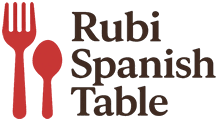
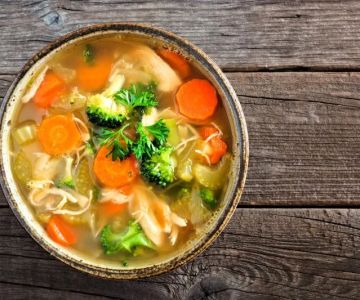
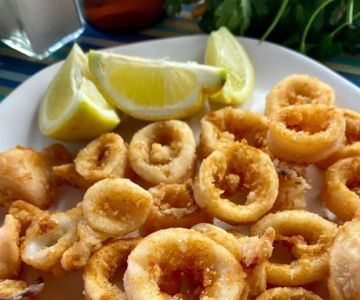
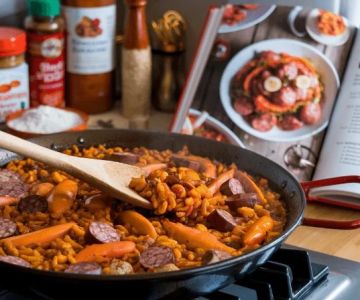
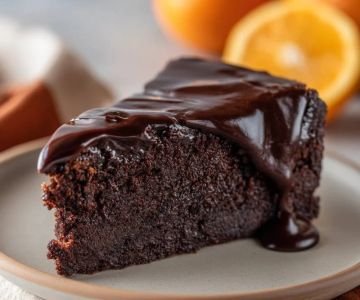
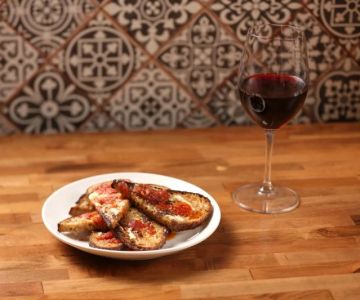
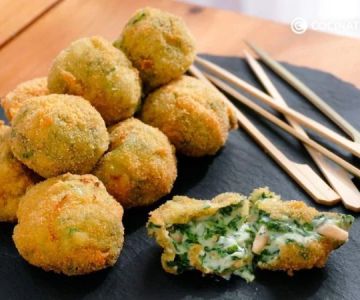
 El Paladar – Latin Cuisine Restaurant5.0 (2 reviews)
El Paladar – Latin Cuisine Restaurant5.0 (2 reviews) Loma 5 Restaurant Rockaway Ave4.0 (452 reviews)
Loma 5 Restaurant Rockaway Ave4.0 (452 reviews) Tambora Restaurant4.0 (3 reviews)
Tambora Restaurant4.0 (3 reviews) Telefèric Barcelona Long Beach4.0 (131 reviews)
Telefèric Barcelona Long Beach4.0 (131 reviews)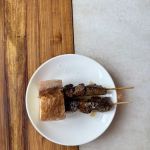 Tía Pol4.0 (676 reviews)
Tía Pol4.0 (676 reviews)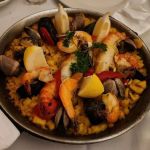 La Paella4.0 (459 reviews)
La Paella4.0 (459 reviews) How to Make Spanish Migas con Chorizo y Huevos: Traditional Bread, Sausage, and Egg Dish
How to Make Spanish Migas con Chorizo y Huevos: Traditional Bread, Sausage, and Egg Dish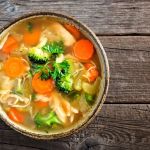 How to Make Spanish Caldo de Pollo con Verduras: Chicken and Vegetable Soup
How to Make Spanish Caldo de Pollo con Verduras: Chicken and Vegetable Soup Exploring the History and Cultural Significance of Spanish Tapas
Exploring the History and Cultural Significance of Spanish Tapas How to Make Spanish Tarta de Chocolate: Rich Chocolate Cake Recipe
How to Make Spanish Tarta de Chocolate: Rich Chocolate Cake Recipe Discovering Spanish Food Markets in Spain That Inspire Recipes
Discovering Spanish Food Markets in Spain That Inspire Recipes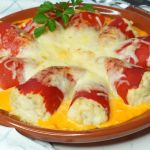 How to Make Spanish Piquillos Rellenos de Bacalao: Stuffed Piquillo Peppers with Cod
How to Make Spanish Piquillos Rellenos de Bacalao: Stuffed Piquillo Peppers with Cod